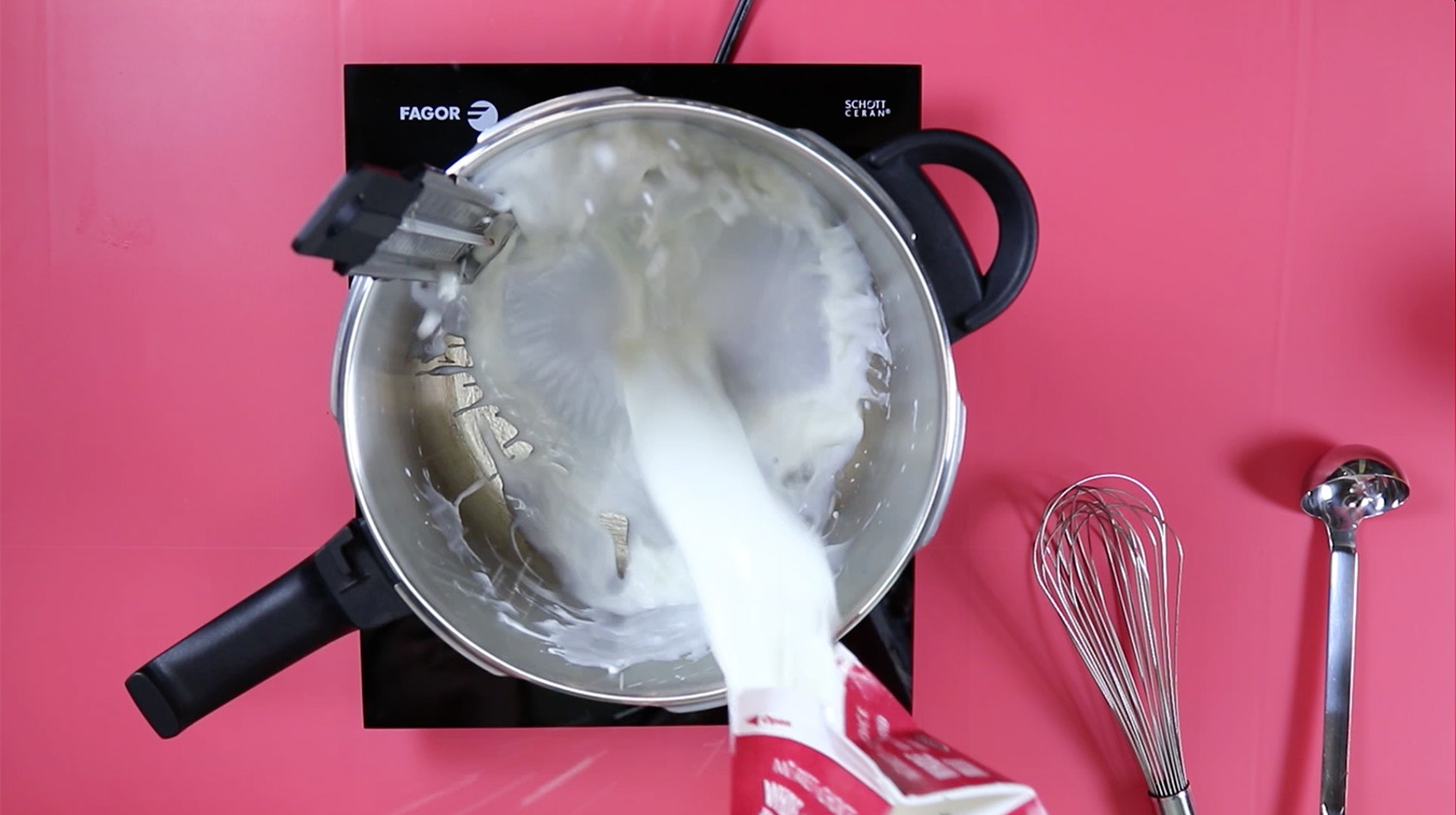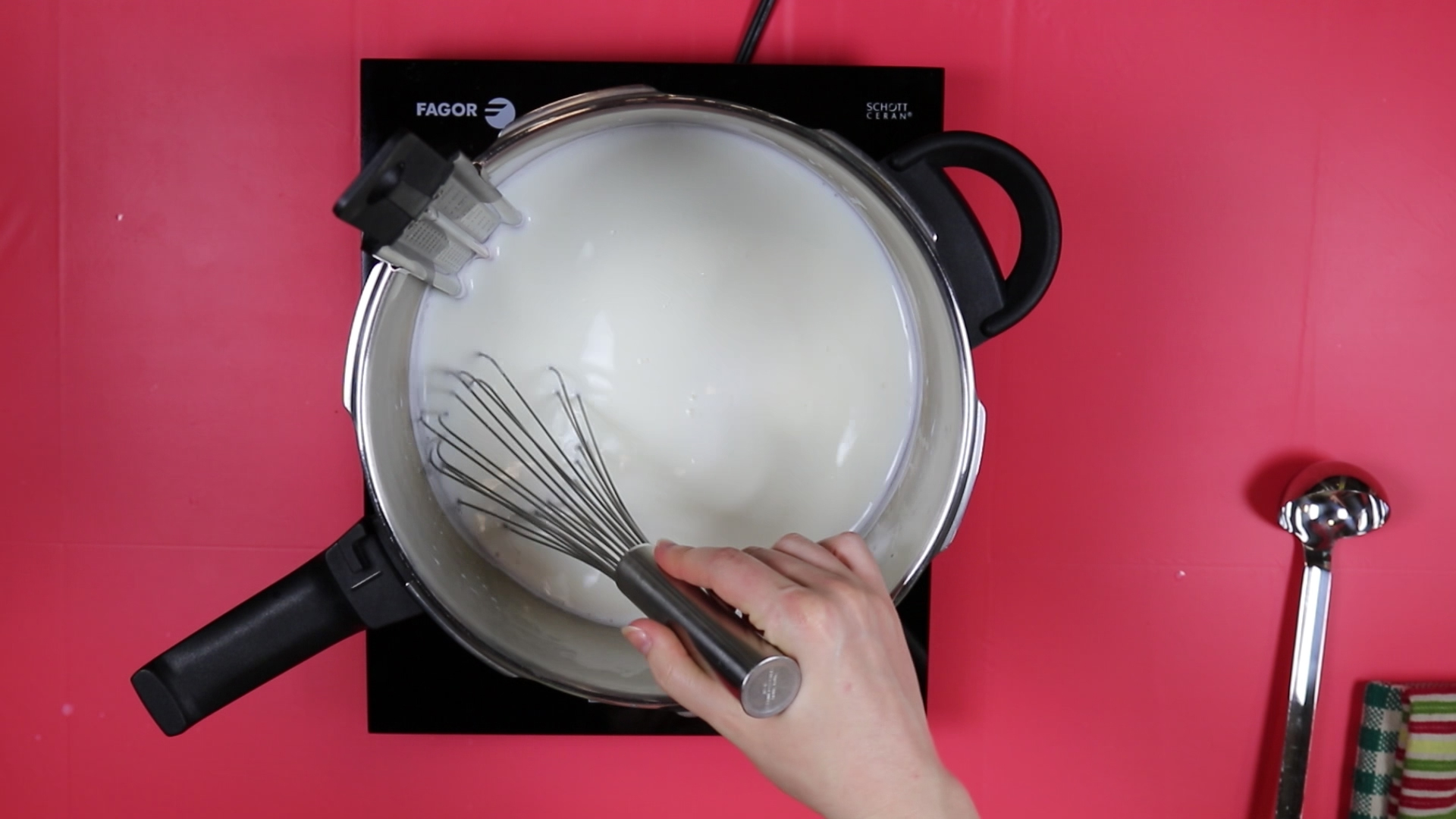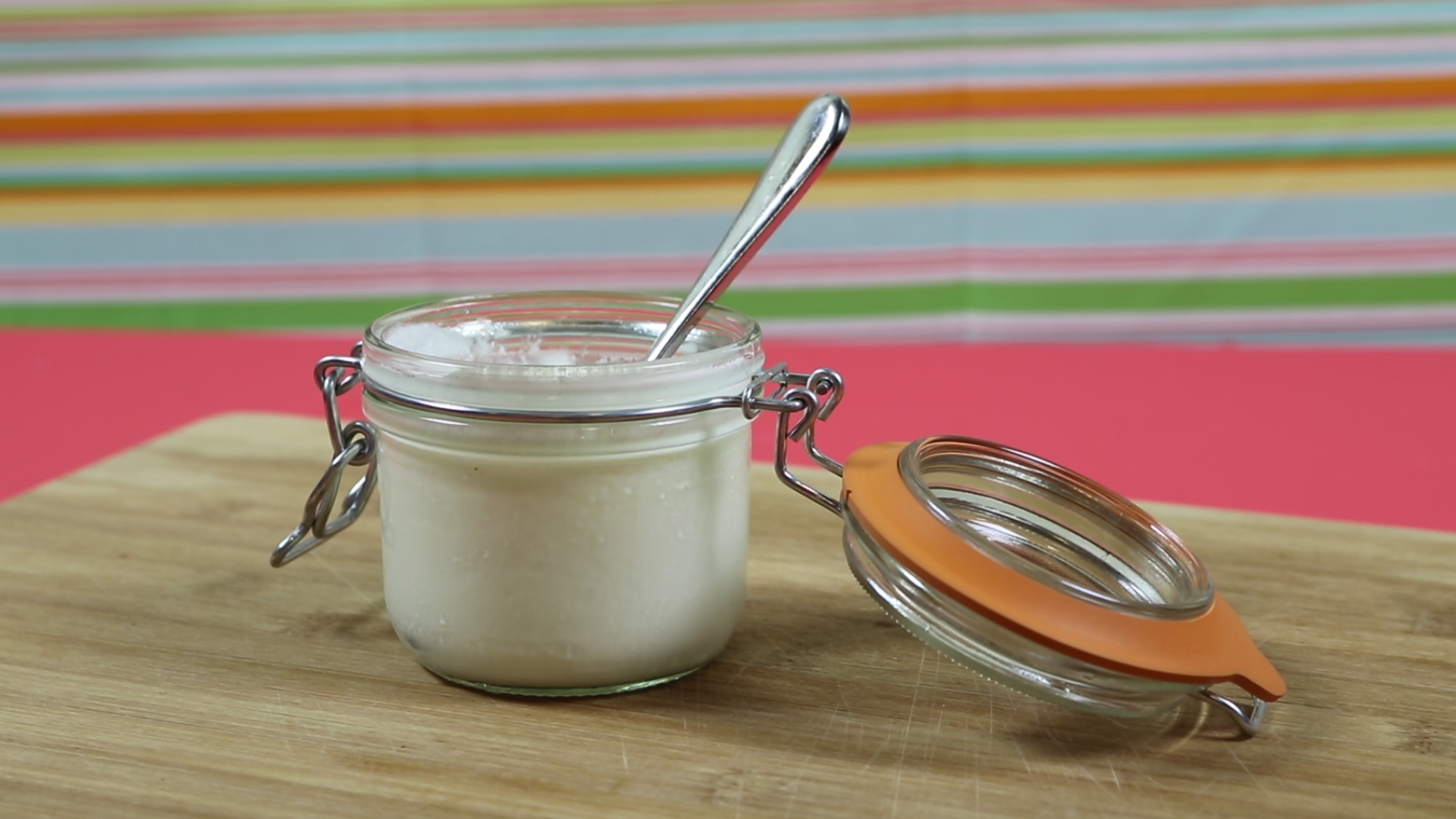INGREDIENTS
1 quart of milk
2 tbsp active starter
We love yogurt. It’s fun to eat on its own or with a little toppings, and it’s a great ingredient in recipes. It’s such a versatile ingredient that there are dozens of varieties at the supermarket, but for a truly unique yogurt experience, you can make it at home. It requires two ingredients, good arm muscles, a dehydrator and an advanced sense of patience.
If you are interested in making your own yogurt but don’t own a food dehydrator, alternative recipes can be found online or at your local library.

Step One: Heat milk to 185°-190° on medium heat and Stir constantly
The milk should be heated slowly and stirred continuously to prevent scorching. It cannot be stated enough that there will be a lot of stirring at this point in the process. If you have a helper, this is a great time for them to take over.

Step Two: Cool milk to 110°
Once your milk has come to temperature, turn off the heat and let it come down to 110°.

Step Three: Add 2 TBSP. yogurt starter and Mix well
For our yogurt starter, we used 2 tbsp. of plain, organic yogurt with active cultures. We chose a local, good quality yogurt to use. When you’re picking one out, choose one that you would eat on its own, as you are going to be using its active culture to grow your own.

Step Four: Pour pre-yogurt mixture into jars
We sterilized our jars before filling to reduce the chance of contaminating our yogurt with anything else that might grow before they were refrigerated. As well, we used a second set of hands to help hold our jars, so we wouldn’t make a mess of milk everywhere.
For this batch of yogurt, we used smaller jars because we wanted to have handy, individually prepared containers for later, but if you would like, you can use larger containers for bulk sizing.

Step Five: Dehydrate at 110º for 8-10 hours
Set your dehydrator for 110° and place the filled, closed jars inside. Allow the milk mixture to rest for 8-10 hours inside of the dehydrator. When the yogurt is done, the milk mixture will have set to a firm consistency. Refrigerate your finished yogurt, and it will keep for up to two weeks.

Step Six: Enjoy your yogurt
You’ve done it; you’ve made yogurt. The most important thing to remember now is that yogurt is delicious on everything. Use it as a fresh ingredient to cut the sweetness in desserts, or use it as a condiment for savory foods or as dressing for vegetables.

Dress up your yogurt: Blueberries, chopped walnuts and honey
Now, plain yogurt is great, but yogurt with toppings is categorically better. We made four different kinds of yogurt with just a couple of additions. You can add anything that you find delicious to your yogurt. For the video, we made four variations on standard yogurt.
For our first yogurt, we used fresh blueberries, chopped walnuts and honey. You can use any berry that is in season, like blackberries or raspberries. Almonds, pistachios or pecans can be used instead of walnuts. Nuts and fresh fruit provide additional fiber, as well as protein and sweetness to the snack.

Dress up your yogurt. Sliced, organic peaches and honey
For our second yogurt, we added sliced, organic peaches and honey, but you can use any stone fruit that is in season. We suggest using local, organic honey that captures the spirit of your part of the world.

Dress up your yogurt. Homemade strawberry yogurt
For our third yogurt, we stirred in homemade strawberry jam, which is a great way of getting out-of-season fruit into your breakfast. Since we made it ourselves, we were able to control the sugar content of our jam, so our yogurt naturally sweet with the flavor of strawberries and not just sugar. You can use any jam or jelly in your refrigerator, and we’ve made it with spicy apple butter or rich marionberry jam.

Dress up you yogurt. Blueberries and granola
For our fourth yogurt, we used blueberries and organic granola. Granola is a great way to bring a lot of flavor and texture to your yogurt. If you don’t make your own from scratch, you can always make your own custom mix by buying a quality base from a health food store and adding your own dried fruit and nuts.
It’s delicious because of what’s not in it
By making yogurt at home, you get to control everything that goes into, like organic, high-quality ingredients, but you also control what doesn’t go in it, like artificial flavors and colors. Your homemade yogurt is good for more than just breakfasts and sweet snacks. Use it in savory dishes as a replacement for heavier dairy items or as a creamy touch.
